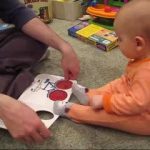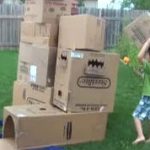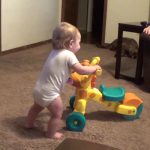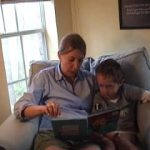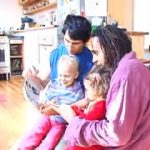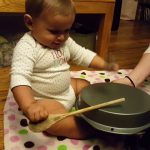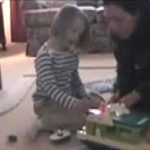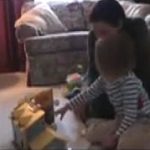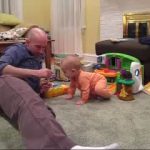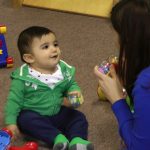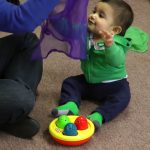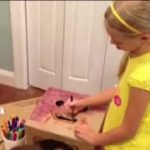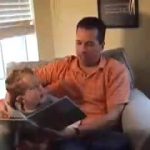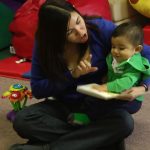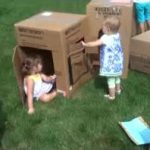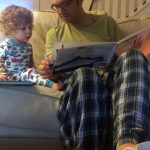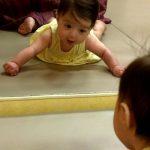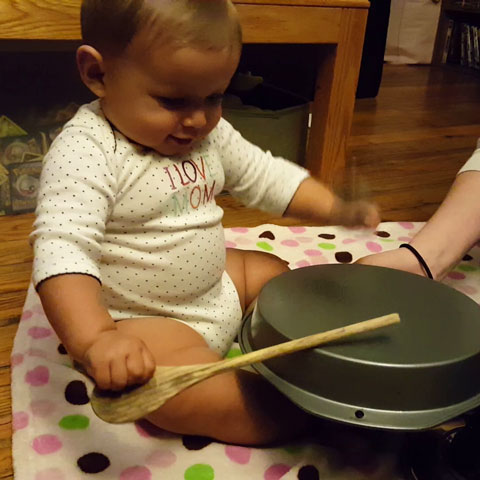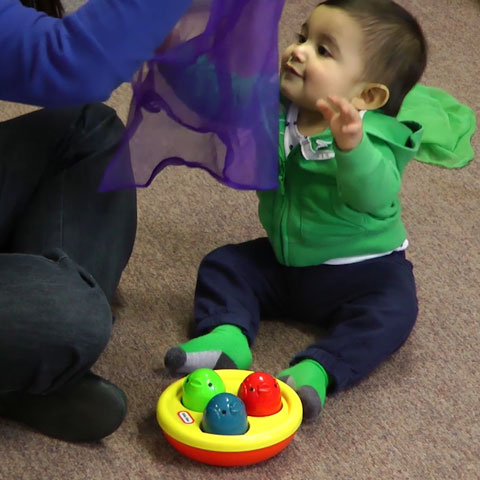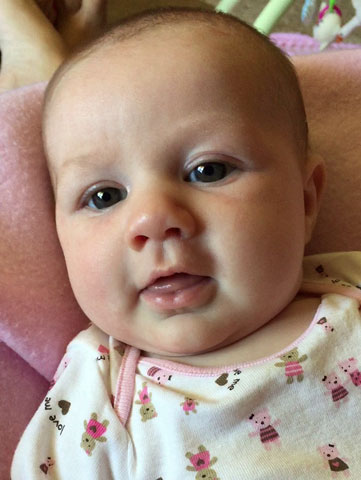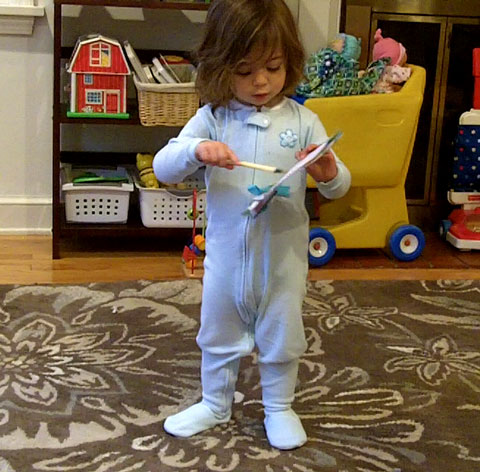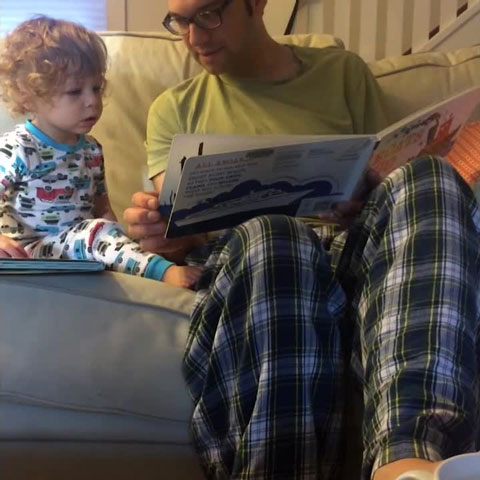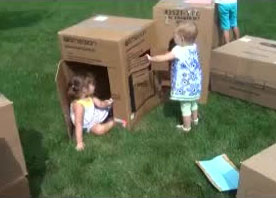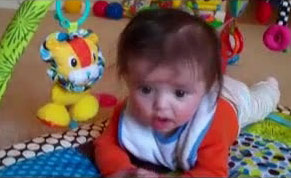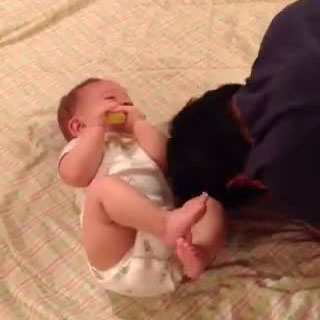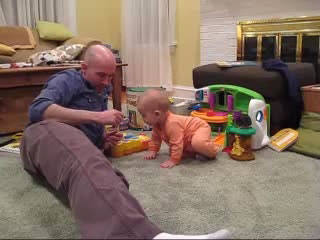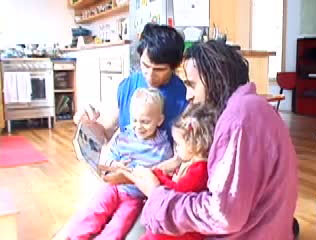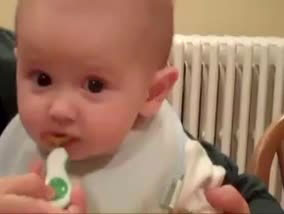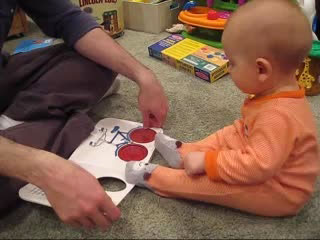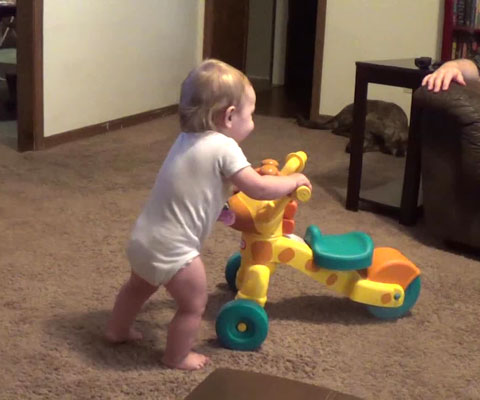Category: Parenting Videos
-
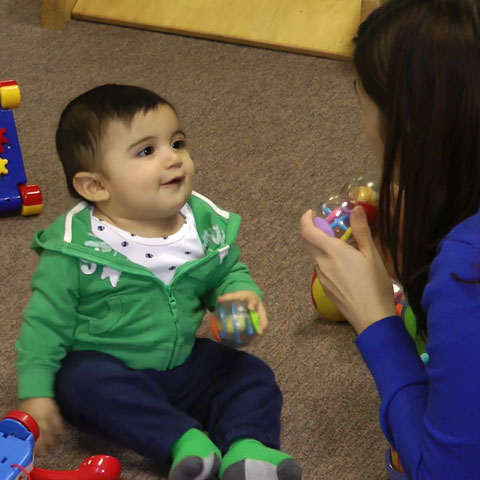
Look What This Can Do!
In this video, we see Mario and his mother, Norma, as they play in a playroom at a local community center. Norma shows Mario different ways to use the toys. When Mario bangs the toys together, Norma encourages his inventiveness by commenting on the creative ways Mario uses the toys to make noise.
-

Solving the Shoe Puzzle
As infants become mobile, they can explore and discover their world first hand. In this video, we see 12-month-old Aaron as he tries to put on a pair of his sister’s shoes.
-
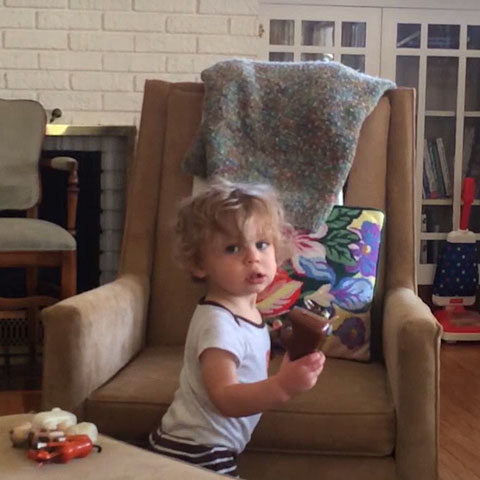
Rounding Up the Cows
Young children develop skills across domains as they grow. Sometimes, a new skill in one area allows them to make gains in another area. In this video, we see Aaron as he stumbles from the bench to the ottoman to transfer his toys from one area to another.
-
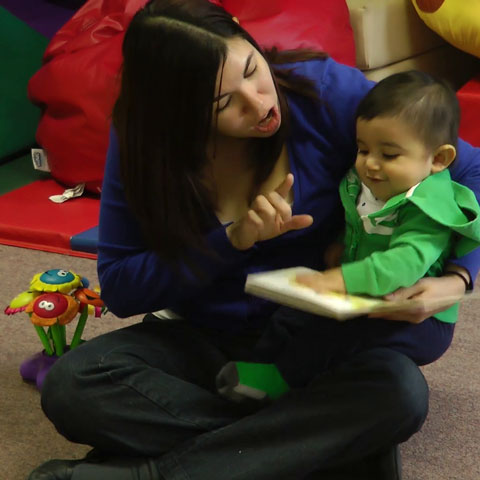
Sing Pío, Pío, Pío
A strong foundation for early literacy learning is created when caregivers and children read together, starting in infancy. Every time a caregiver reads, sings, and talks with a young child, they are building the child’s vocabulary and language skills.
-
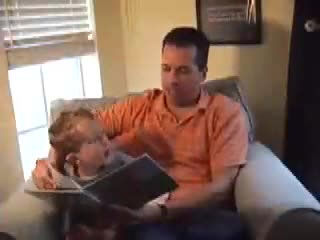
Reading Partners: Sharing the Lead in Storybook Reading
Bilingual couples often hope that their children will grow up fluent in each of their languages. Reading storybooks in both languages can help support this ability. This clip shows the benefits of repeated readings of a familiar book in both English and Spanish.
-
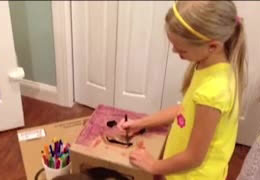
Pretend Play with Big Boxes
Pretend play is also called “make-believe,” “dramatic play,” or “symbolic play.” Pretend play contributes to young children’s development and well-being in a variety of ways. This video shows two examples of children’s pretend play.
-

Mix and Count
This video shows 22-month-old Waylon helping his grandmother mix pancake batter for breakfast. His 6-year-old brother, Luke, and his father talk off camera. In the video, we see adults using strategies for interaction that help Waylon learn about the world.
-

Making Pizza Together
Preparing meals is part of the “real work” of family life. Preschoolers can help their parents fix simple foods. The whole family can benefit when parents involve preschoolers in cooking activities. Doing this kind of “real work” together gives family members something meaningful to talk about. It also gives children a chance to learn life…
-
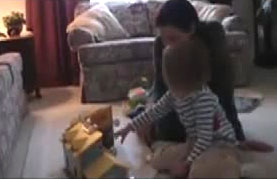
Going Camping
Three-year-old Ellie and her mother are playing with familiar toy family figures, a dollhouse, furniture, and a camper. By listening carefully to what Ellie says as they play, her mother discovers things that she can help Ellie understand in areas such as counting, good manners, and nutrition.
-
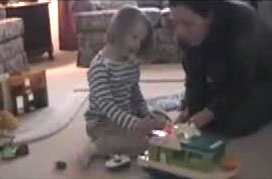
The Doggie and the Shark
In this clip, 3-year-old Ellie and her mother engage in pretend play with small figures and boats. Joining Ellie in pretend play allows her mother to model play skills, extend pretend play, help build vocabulary, and promote problem solving skills.
-
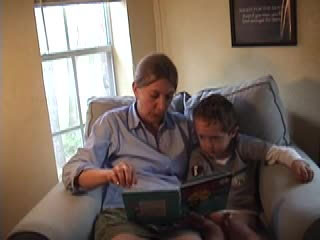
Connecting with Concepts and Skills
In this video Lisa models several ways you can help children connect with new vocabulary and concepts through reading their favorite books with them.
-

Building with Boxes
For families, flexible play materials have the advantage of usually being inexpensive compared with many other toys. They can be especially appropriate for mixed-age groups of children. Children can use them in ways that suit their interests and abilities.
